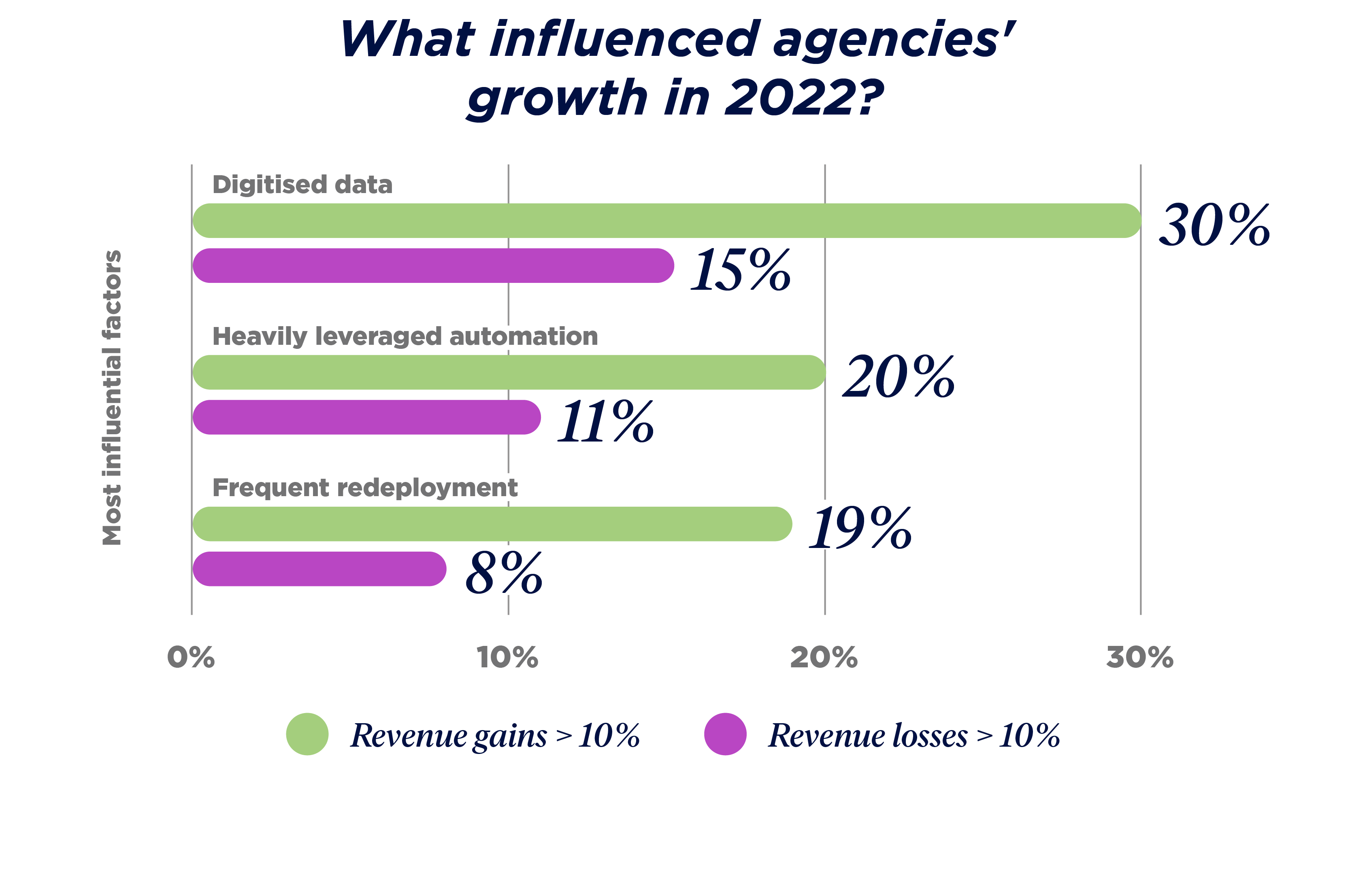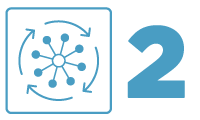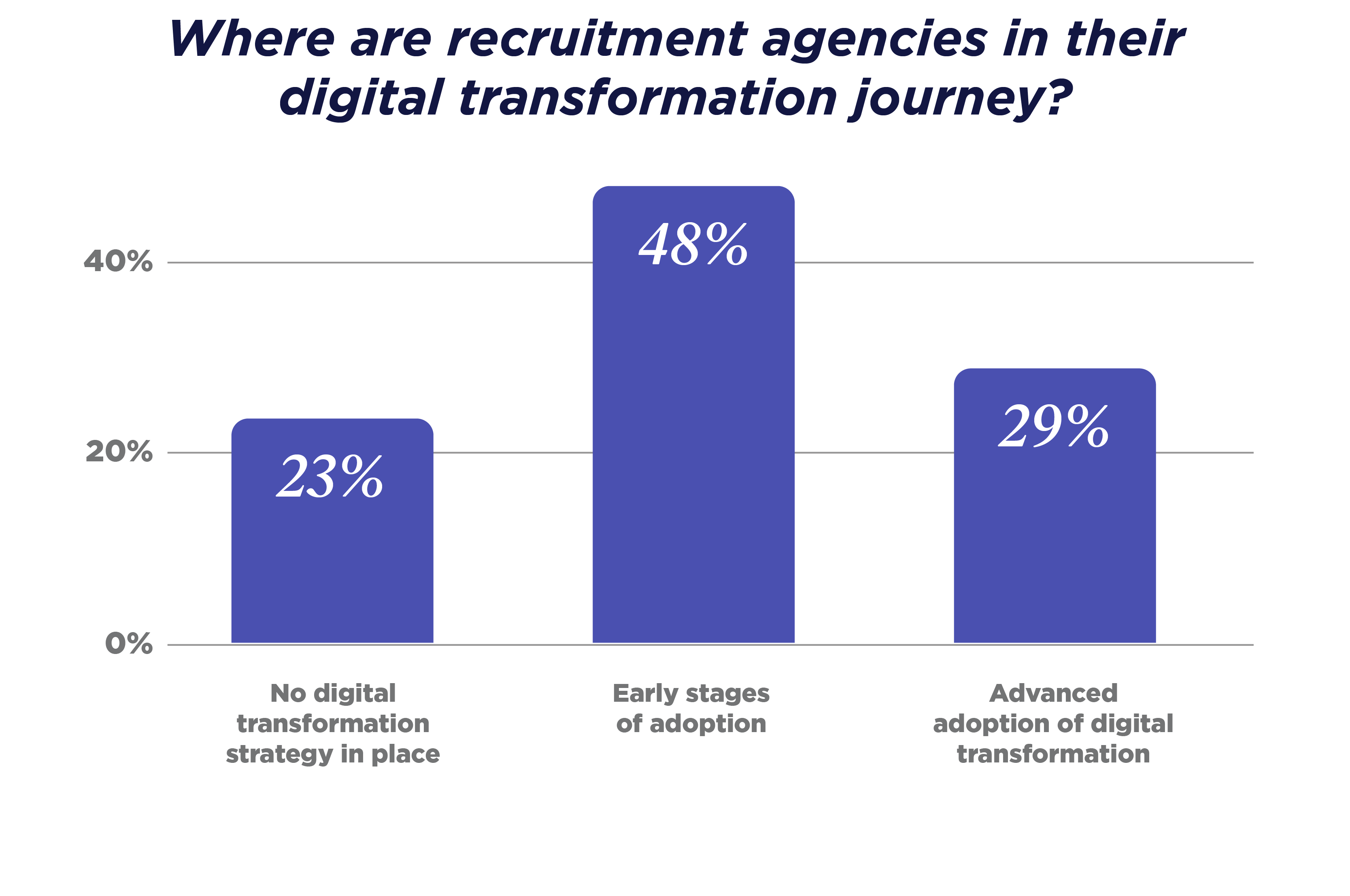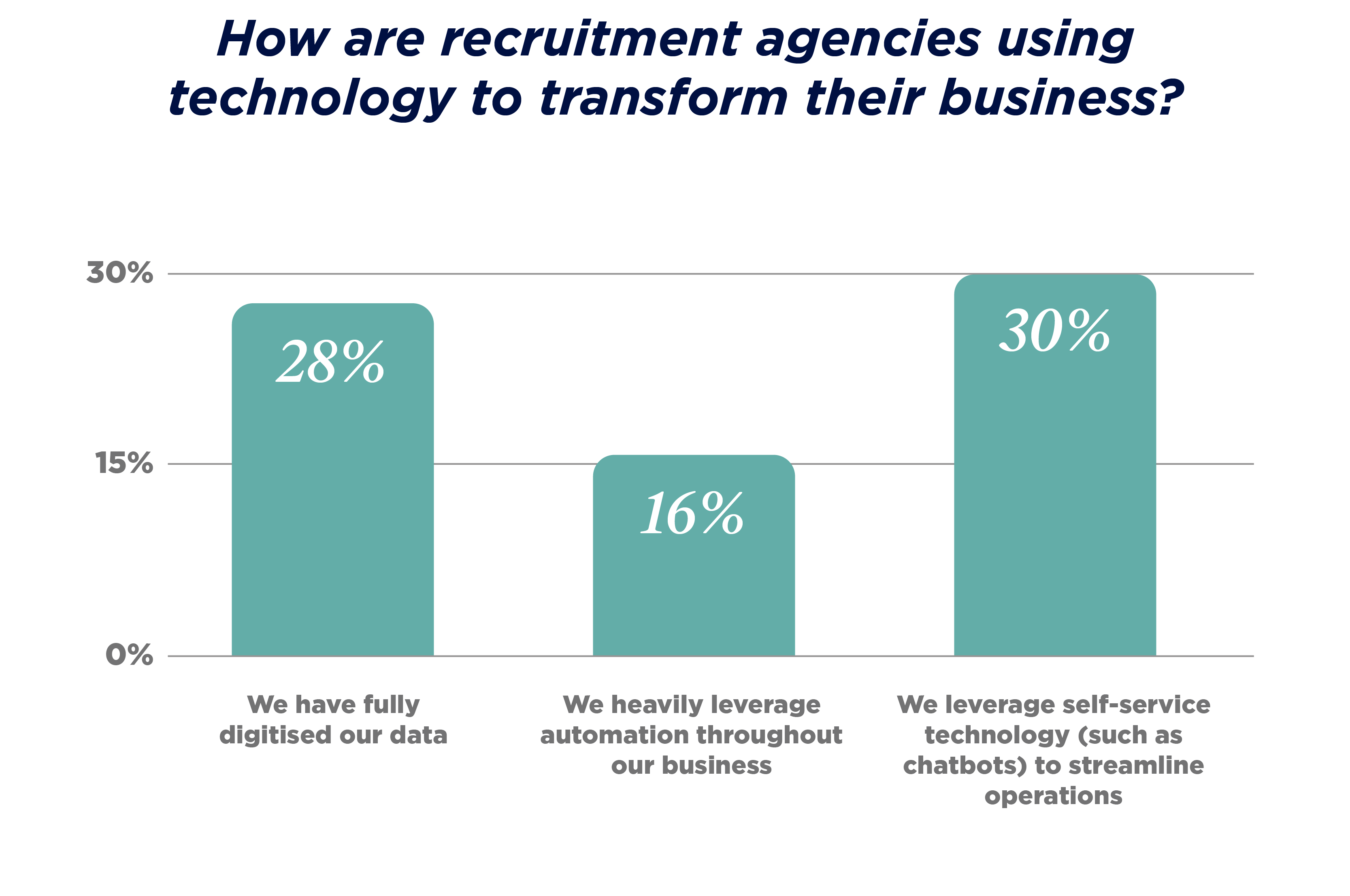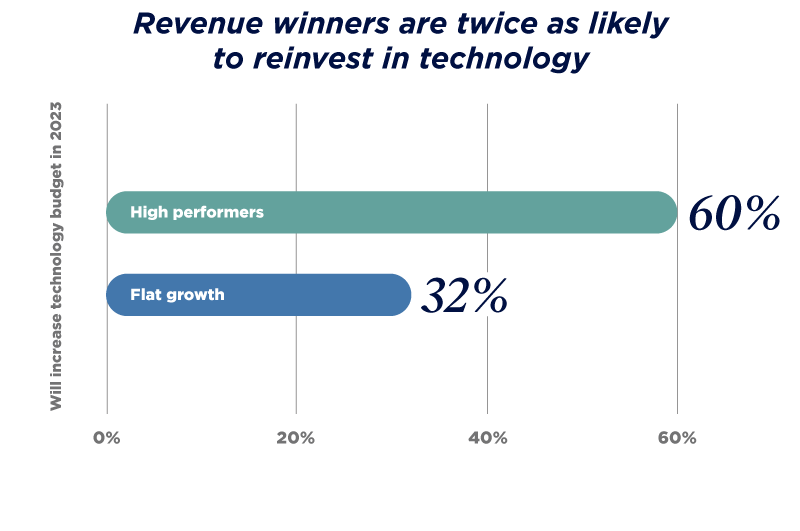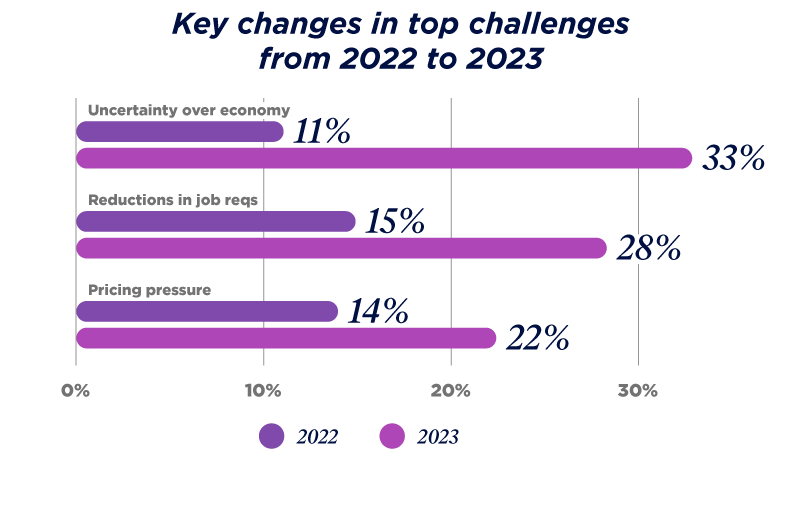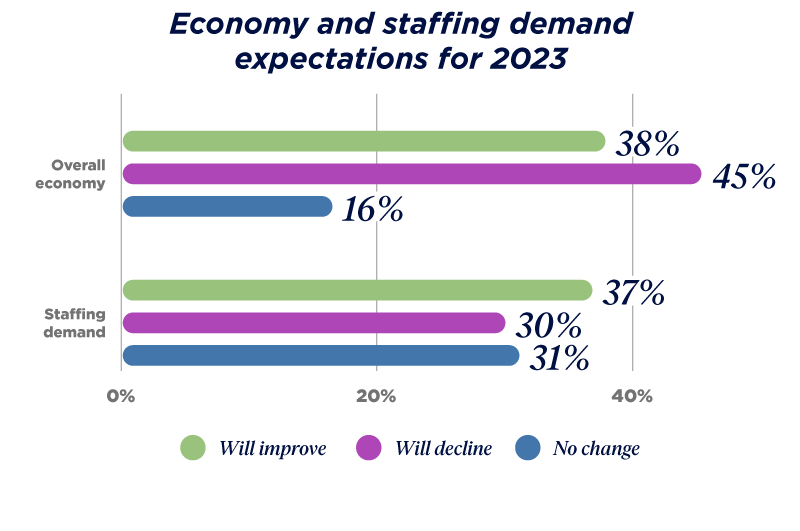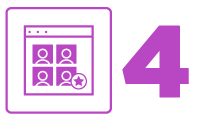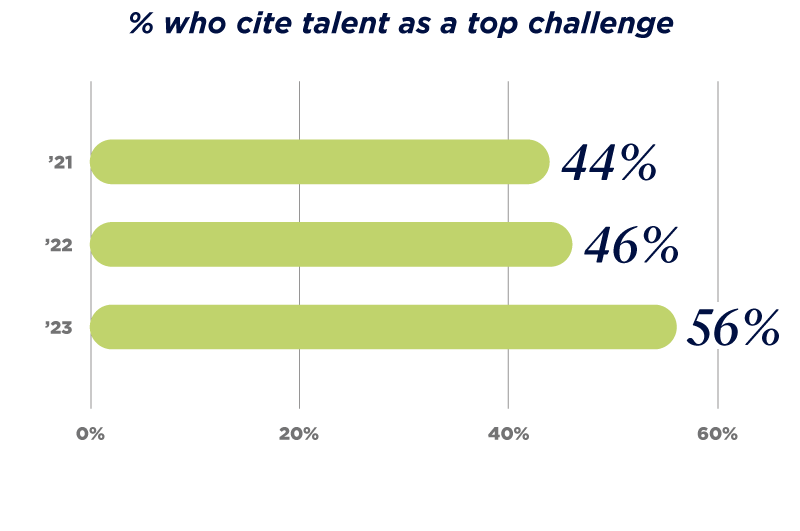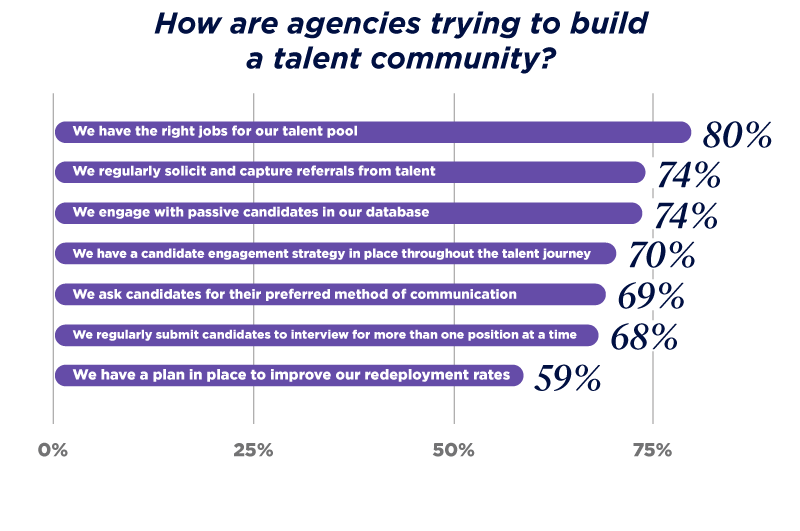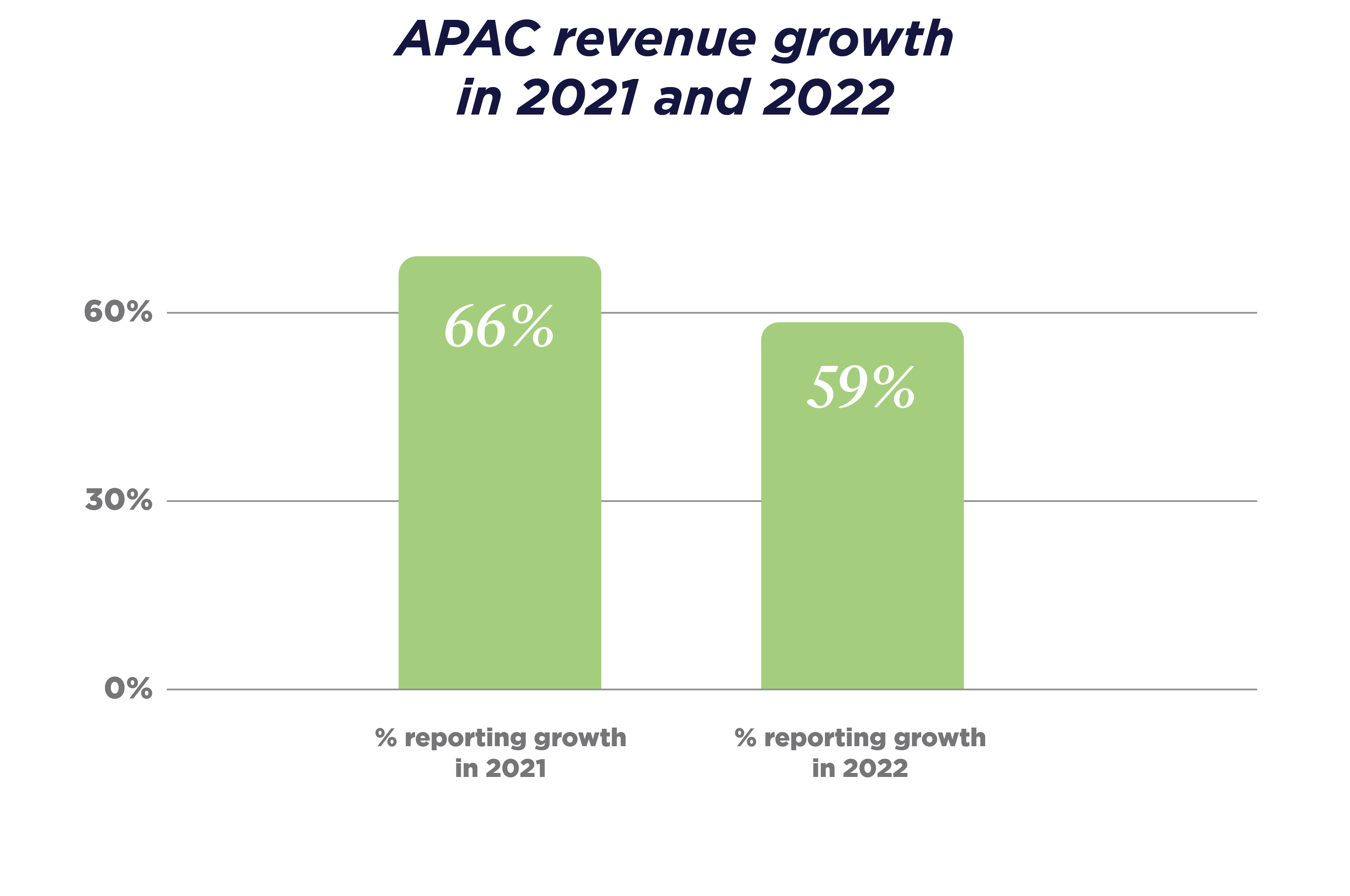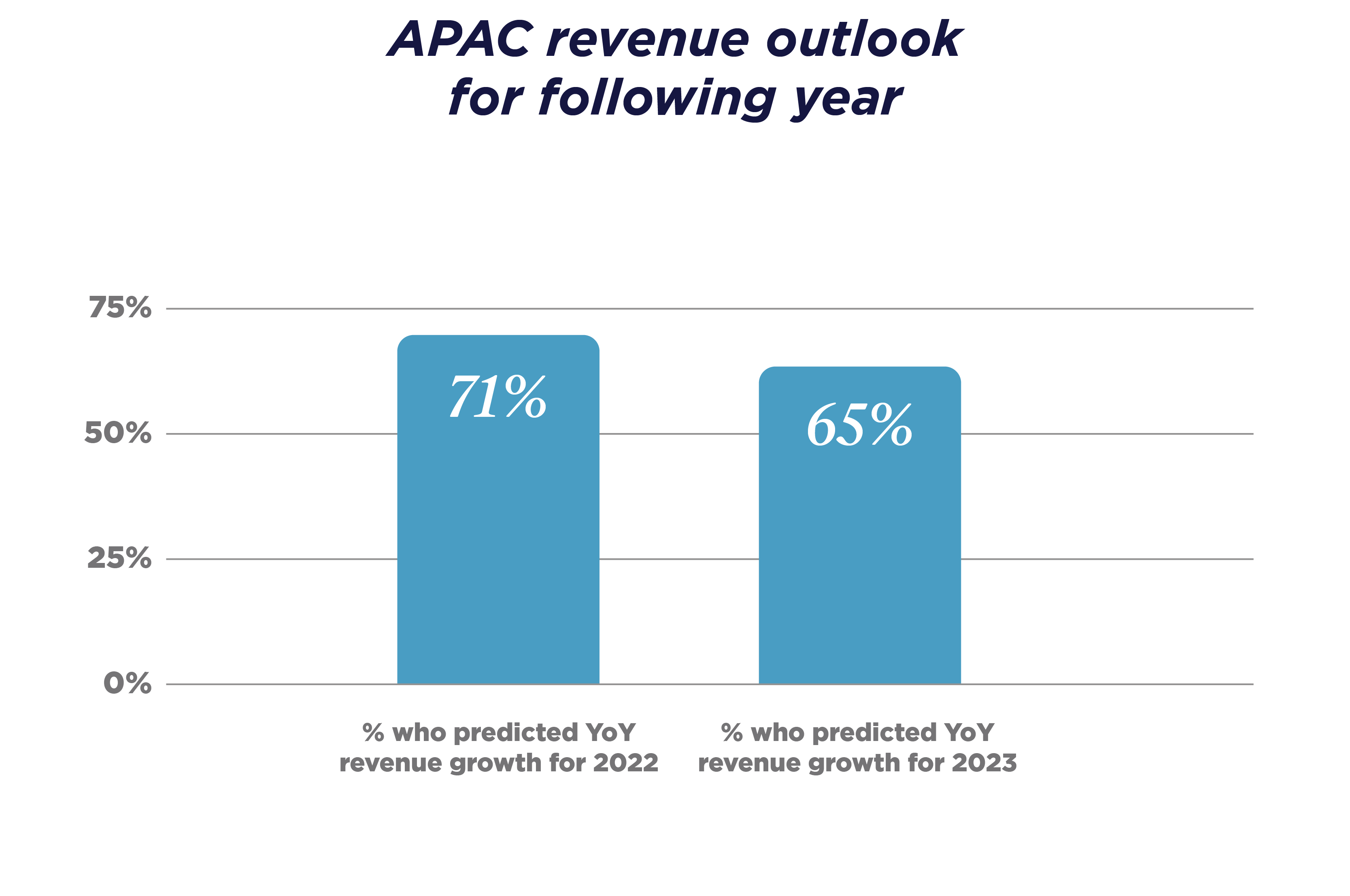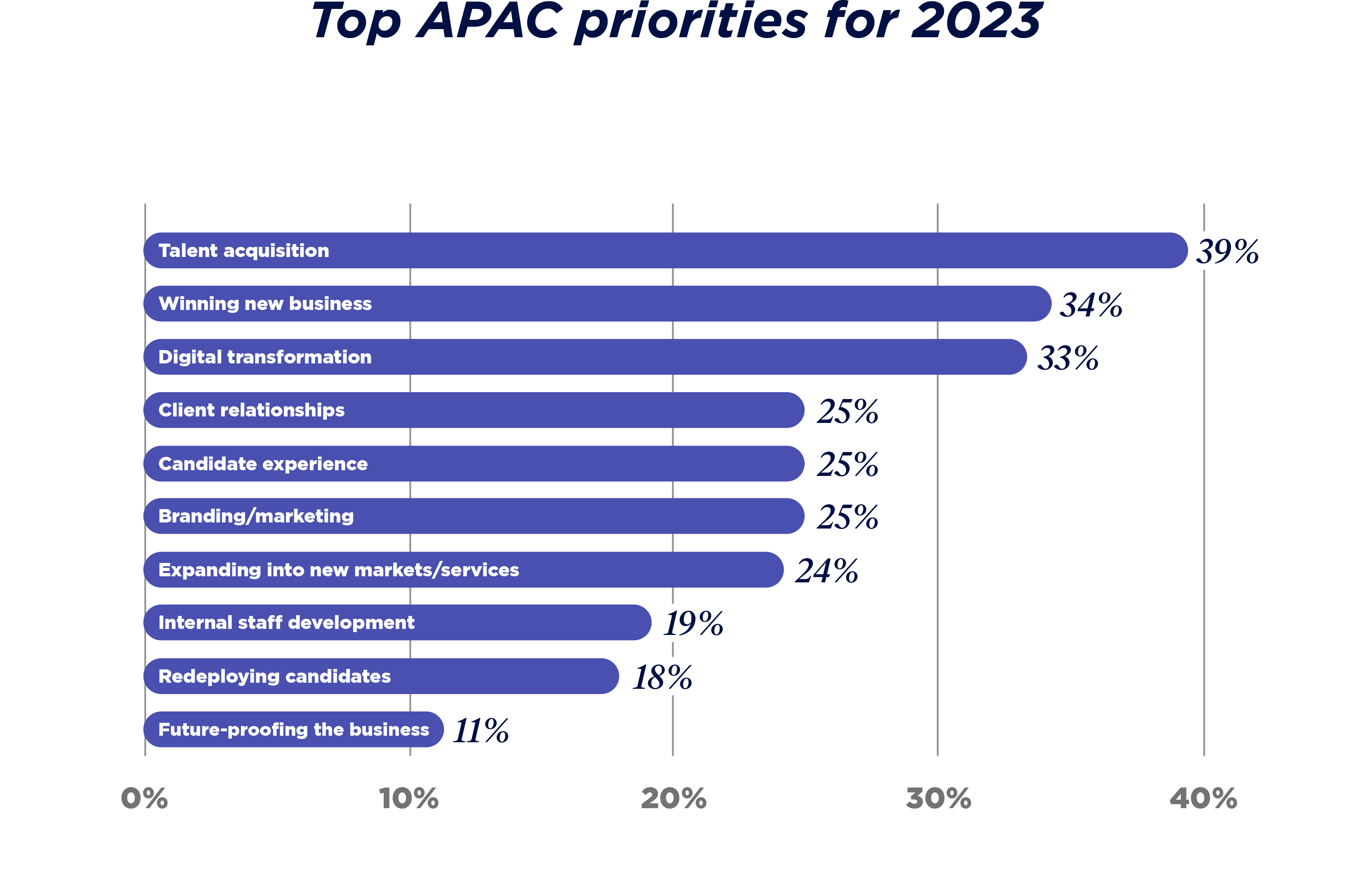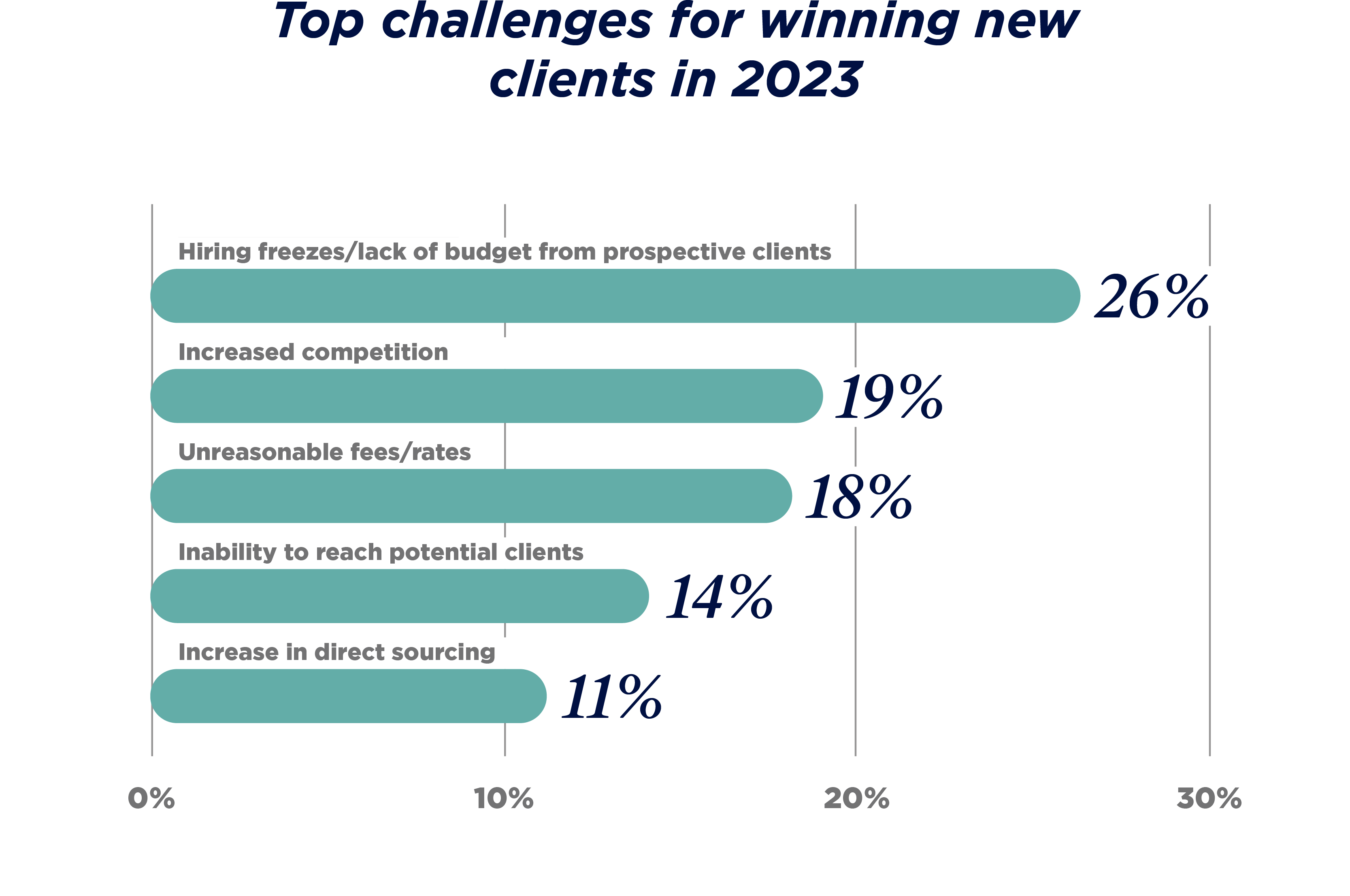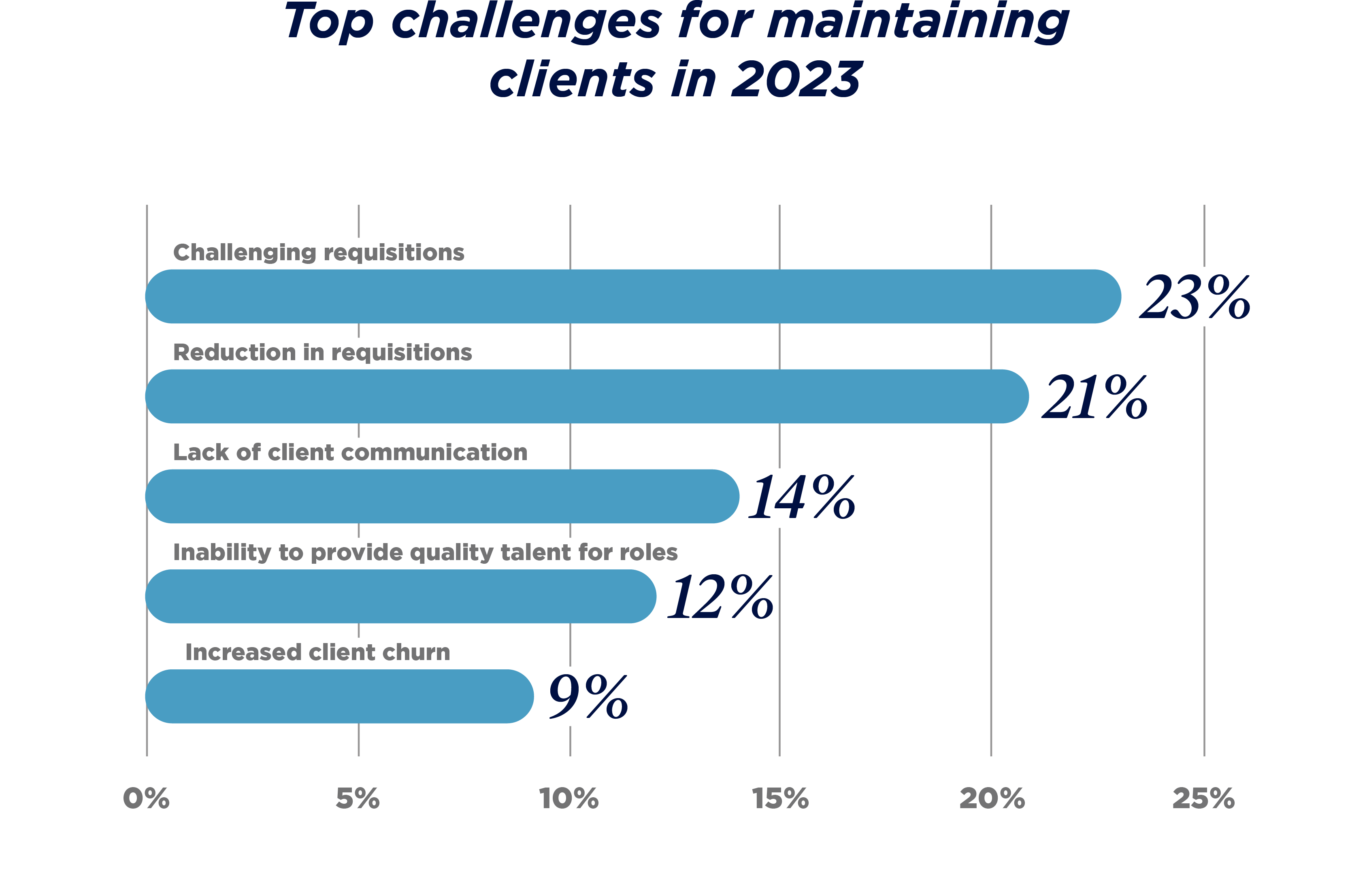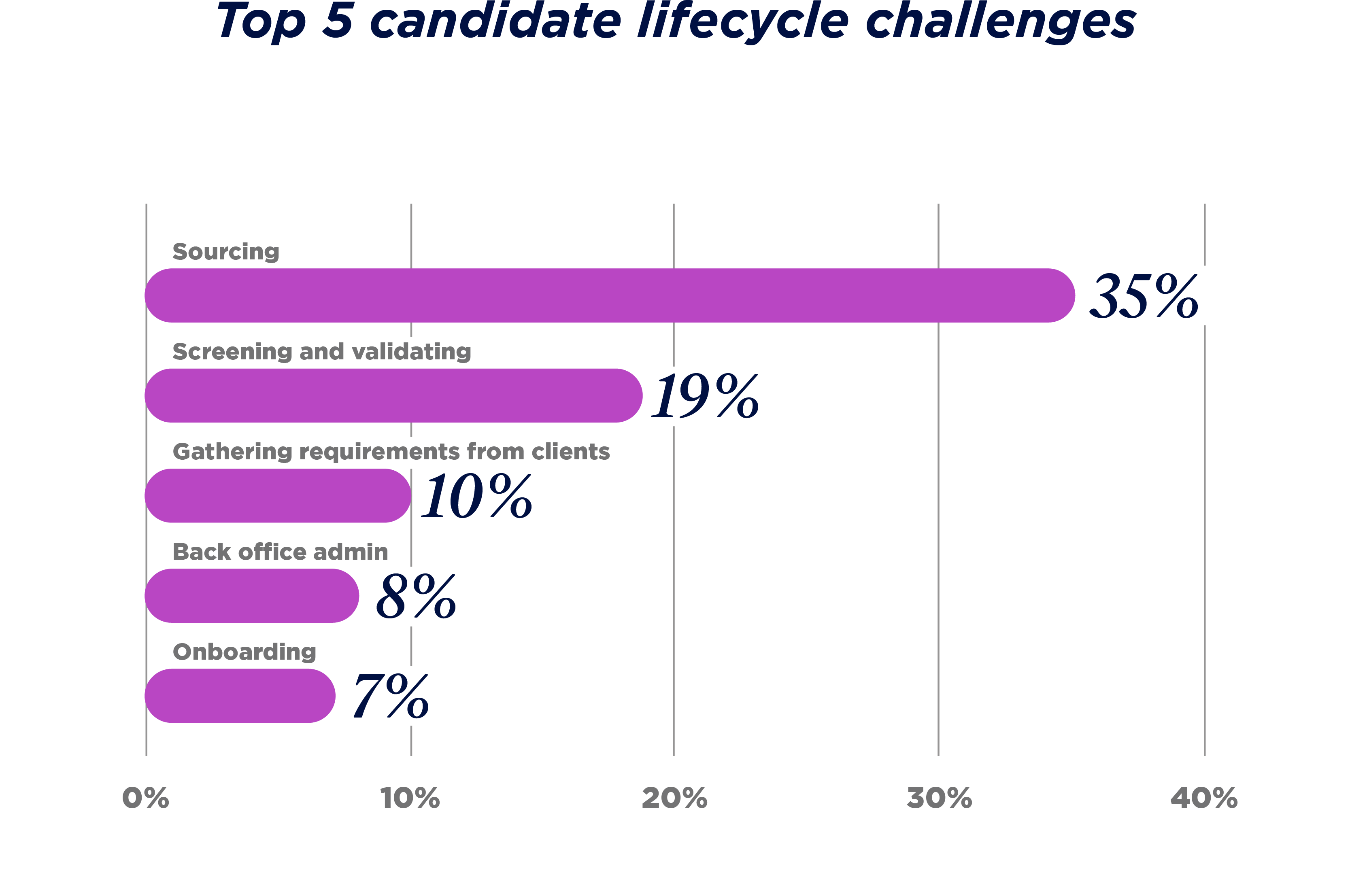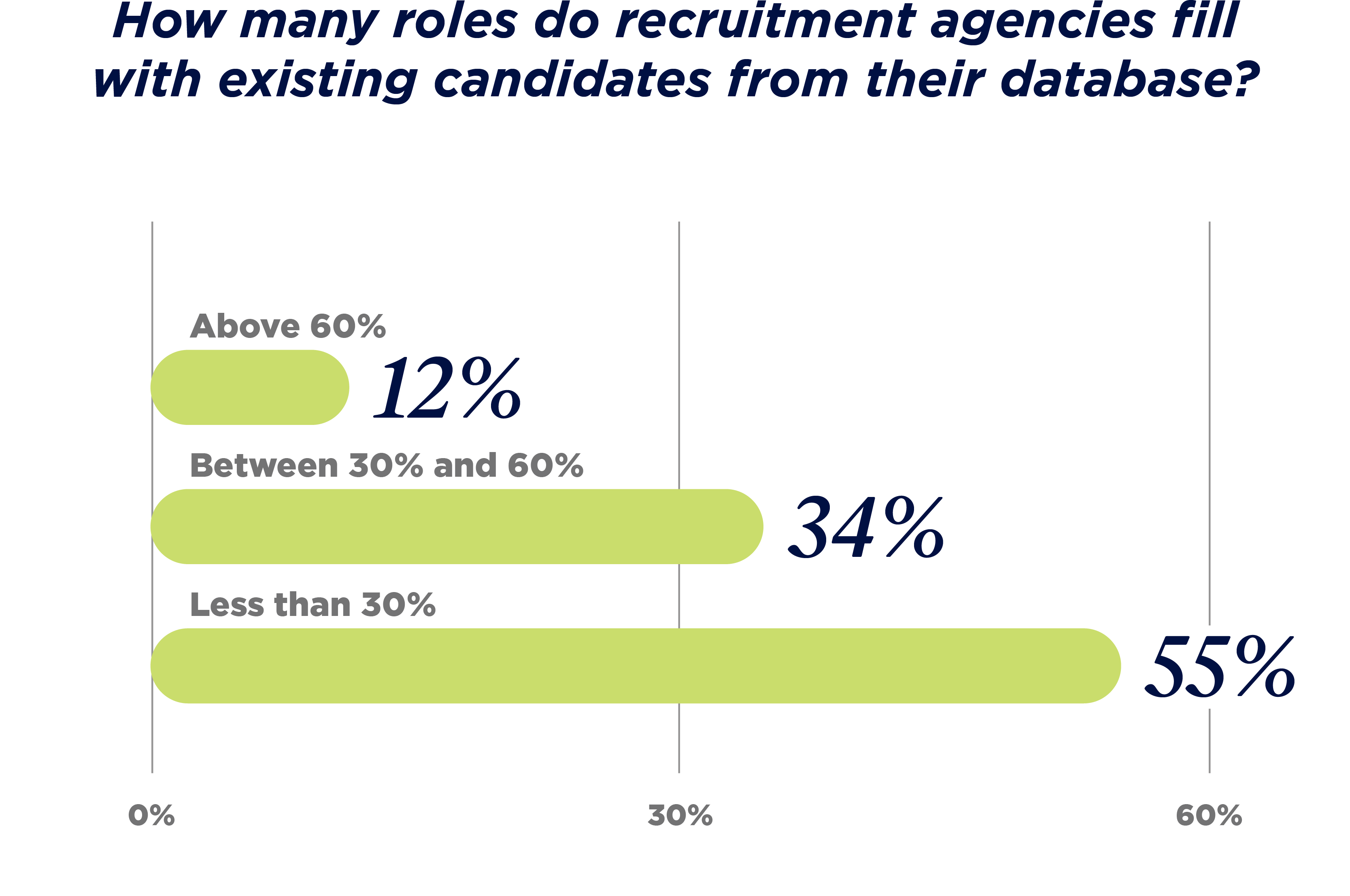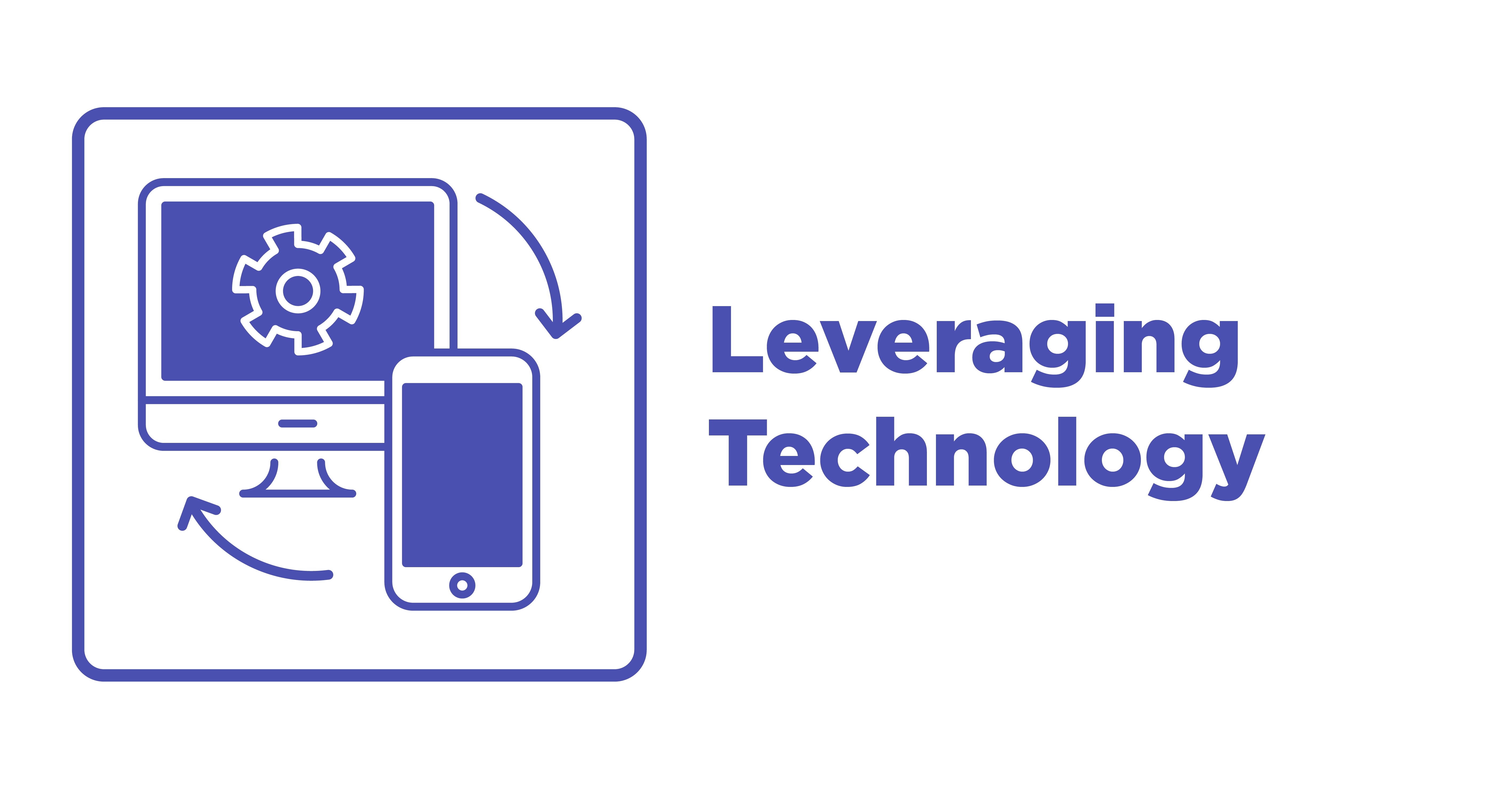
1. High-performing agencies leveraged technology to succeed in a challenging environment.
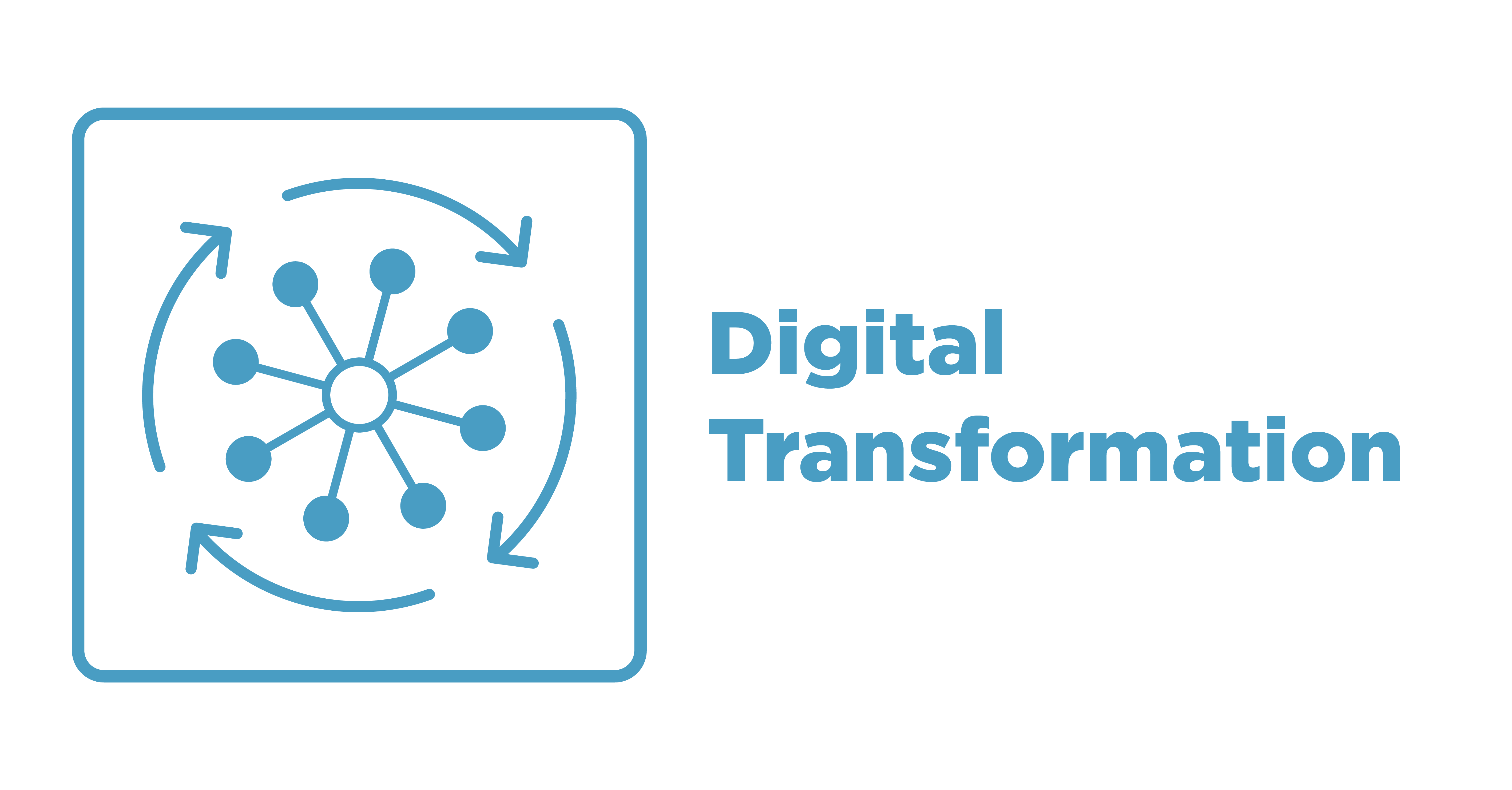
2. Top performers are doubling down on digital transformation and technology in 2023.

3. After a hiatus, developing new clients is again the number one priority for 2023.

4. The labour market remains tight, and agencies are developing talent pools in response.
What does this mean for agencies in 2023?
It’s clear that agencies are leveraging technology to fuel their success, but the industry is just beginning to realise the benefits of digitally transforming their business. For example, less than one-fifth of respondents leverage automation throughout their business.
Agencies that continue to invest in their technology and talent pools will be well-positioned for 2023 and beyond.
What does this mean for agencies in 2023?
Given that the top performers are already twice as likely to leverage automation throughout their business and they’re the group most likely to ramp up efforts in 2023, agencies that don’t keep up risk falling behind.
Those who do step up their efforts may enjoy a significant competitive advantage moving forward.
Last year, client development wasn’t the top priority for recruitment agencies, and it’s hard to understate how unusual that was. For the first time in the survey’s 13-year span, winning new clients wasn’t a top-three priority. While candidate acquisition had been the top priority for six consecutive years, last year, increased skills shortages and unprecedented demand led to a decisive talent-first approach. This year, winning new business makes its return to the top.
Why is this year different?
In short, changes to the recruitment landscape have led agencies to reprioritise winning new clients. In particular, pricing pressure, reductions in job requisitions, and economic uncertainty are major considerations new to the year ahead.
Three times as many agencies cite economic uncertainty as a challenge in 2023 compared to 2022. Meanwhile, pricing pressure and job requisition reductions are top challenges after barely registering in the top 10 last year.
But even in a best-case scenario, agencies still must determine the most effective route to winning new business. Given that those who were most successful last year were all in on technology and talent, investing in digital transformation and building a loyal talent pool may be a winning strategy to achieve all three top priorities in the years ahead.
What does this mean for agencies in 2023?
While the majority of agencies report employing talent engagement best practices, the agencies who lag in this area are paying the price with talent. In every instance in the chart above, agencies that followed the best practice were 30% or more likely to report revenue gains in 2022.
The two biggest talent pool factors correlated with success last year? Redeployment and candidate database utilisation. Agencies that outperformed their peers when it came to lining up talent for new roles before the end of the assignment and agencies that utilised their existing database to fill a position were twice as likely to report revenue gains last year and 50% more likely to expect gains in 2023.
Top APAC trends for 2023
Now that you’ve explored our top global trends, let’s take a closer look at how they shaped the priorities, challenges, and outlook for APAC agencies in 2023.
How do APAC agencies differ in their outlook from their global peers in 2023?
While the industry at large is focused on winning new business, APAC agencies are all in on talent in 2023. This is perhaps because they are more likely than their global peers to report a talent shortage and more likely than their peers to predict it to get worse in 2023. While APAC agencies report an increased urgency in securing qualified talent, their methods to win talent reflects the global trend: digital transformation and talent engagement best practices.
Revenue performance and outlook
Steady gains across the industry in 2022
2022 represented another solid year for APAC agencies, continuing gains from last year’s rebound performance. As we noted in our key insights, technology adoption played a bigger part in success than company type, size, or region, but APAC agencies were slightly less likely to report growth than their global peers.
2023 outlook: Cautious optimism
Heading into 2023, the majority of agencies again predict growth in the year ahead, although the predictions are slightly more modest than the preceding two years.
The most likely cause for modest growth expectations in 2023 despite an incredibly strong 2022? Concerns over the economy, increased competition, and pricing pressure.
Who named digital transformation as their top priority?
Benelux agencies
Healthcare recruitment agencies
Commercial recruitment agencies
Large enterprises
Temp agencies
Respondents that chose digital transformation as their top priority shared two key traits in common: better-than-average revenue gains in 2022 and high candidate volumes. Notably, healthcare and commercial agencies, which both require specialised recruitment technology for the challenges unique to their industries, were significantly more likely to prioritise digital transformation than agencies dedicated to professional services.
Who chose talent acquisition as their top priority?
APAC
UK and Ireland (tied with winning new business)
Perm agencies
Respondents that chose talent acquisition as their top priority were more likely than average to cite a talent shortage, and more likely than their peers to predict the shortage to worsen in 2023.
Top challenges
Top existing client challenges: All about the talent
Challenging job requisitions are the top hurdle to maintaining clients in 2023. Relatedly, the inability to provide talent for those roles also landed in the top five. Those who can build and leverage a talent pool of qualified candidates have the best chance to keep clients happy — and away from their competition.
Digital transformation
Most are on board, but few have arrived
As we discussed above, the industry continues to embrace digital transformation, with a record number of agencies citing it as a top priority for 2023. But despite the various benefits, adoption lags.
Almost four-fifths (79%) of APAC respondents either have no digital transformation process in place or are in the early stages of adoption.
Why aren’t agencies leveraging more of their talent pool to fill roles? Fierce competition and limited resources to dedicate to talent nurturing likely play a part, but one major factor: disorganised candidate databases. Two out of five agencies (44%) say they can’t rely on their candidate database.
Those who are leveraging their talent pool, however, are reporting significant benefits. As noted in the key insights, above-average database utilisation was the single strongest factor correlating with an agency’s likelihood of reporting major growth — 70% of these agencies reported major YoY gains in 2022.

